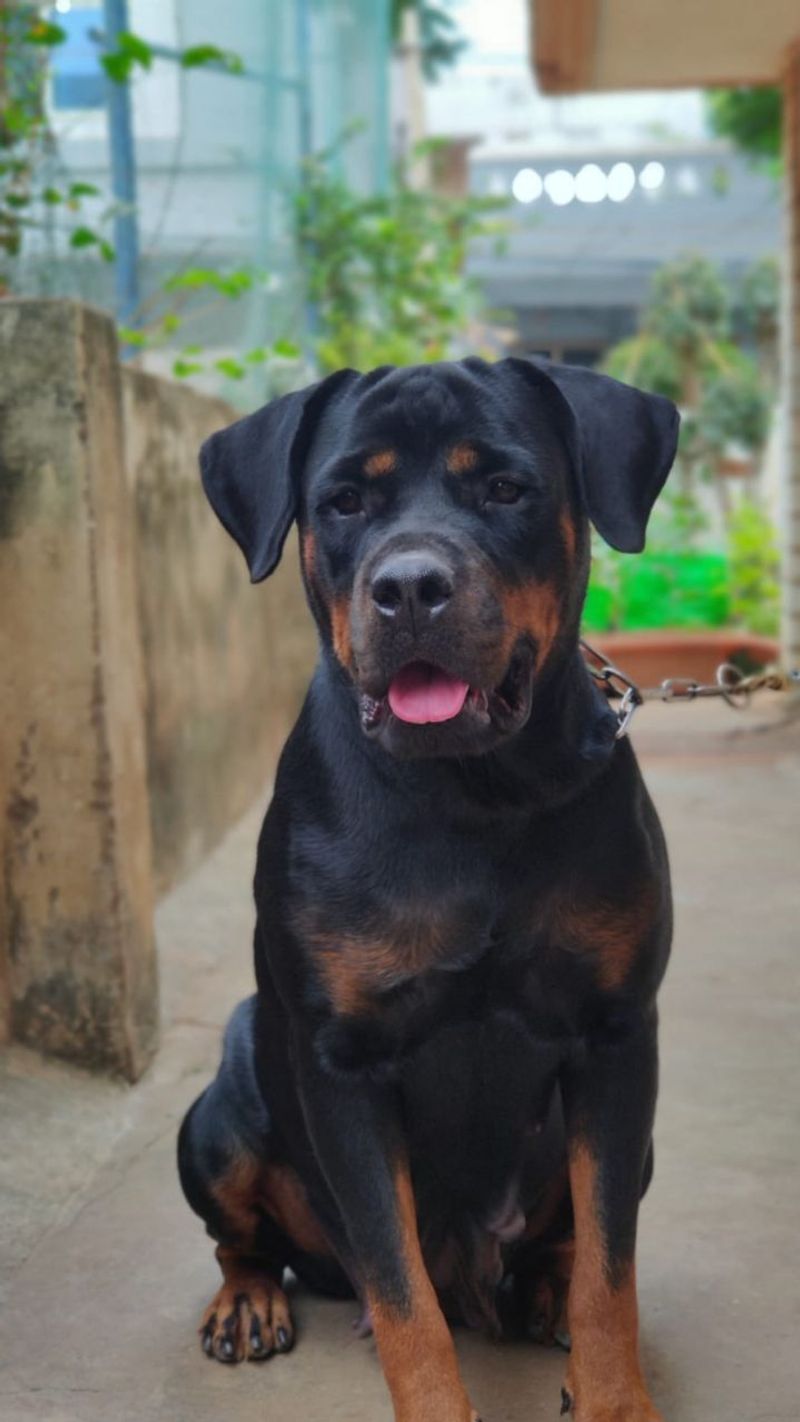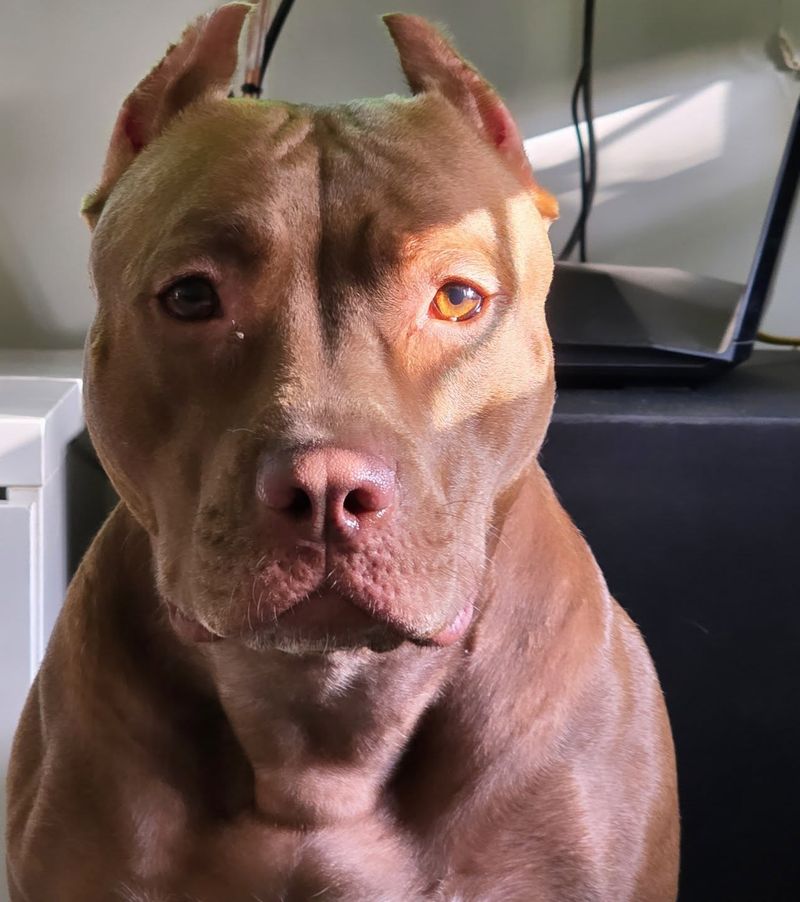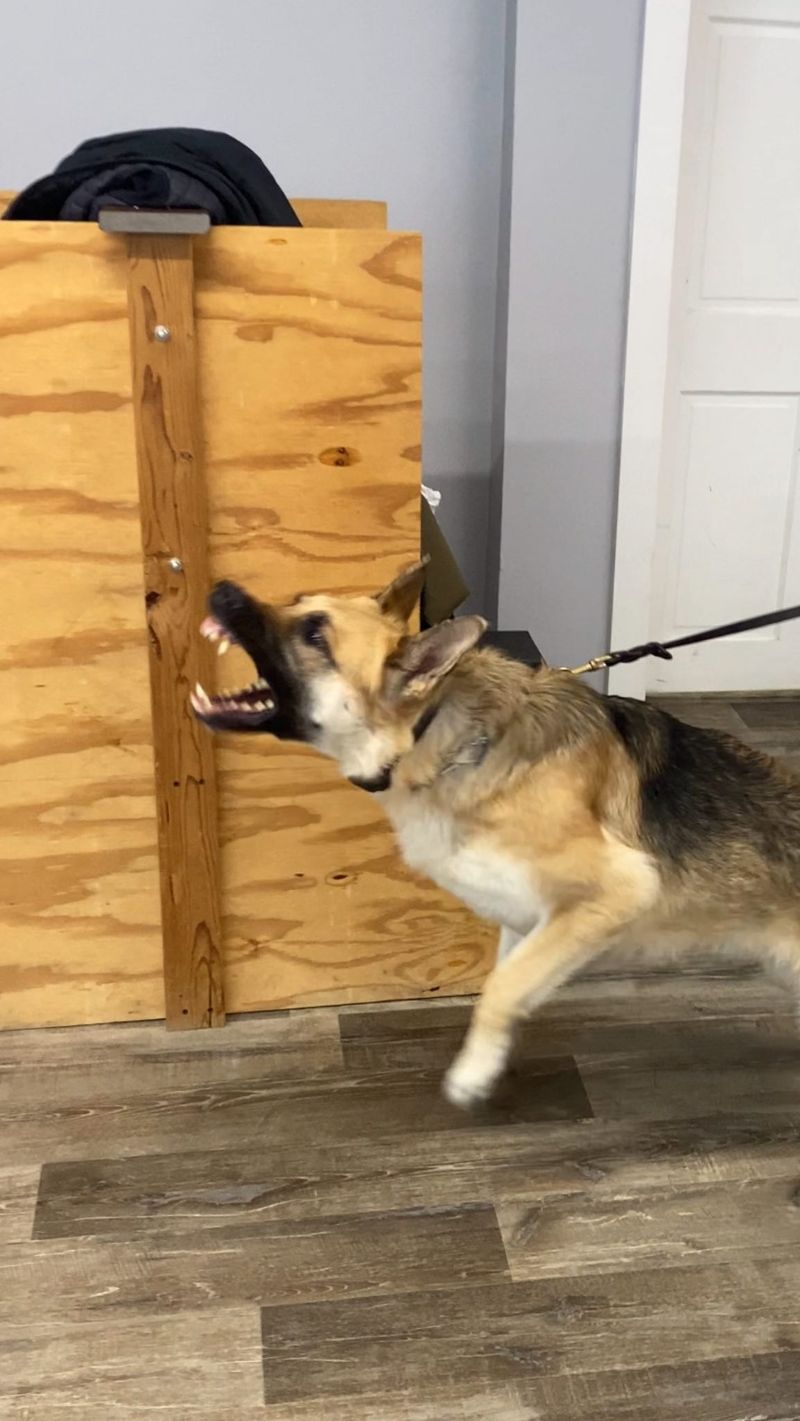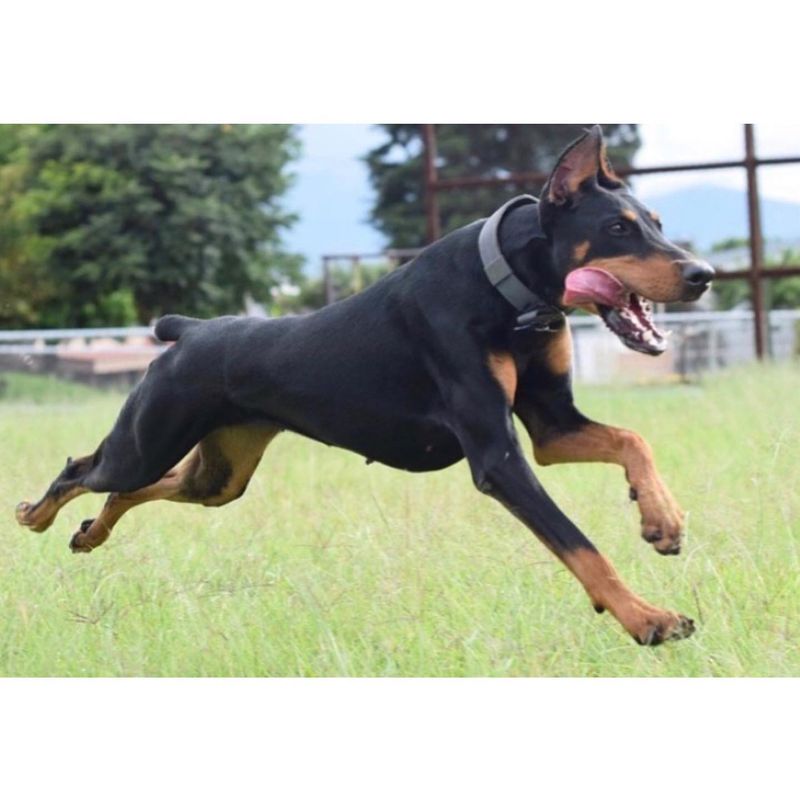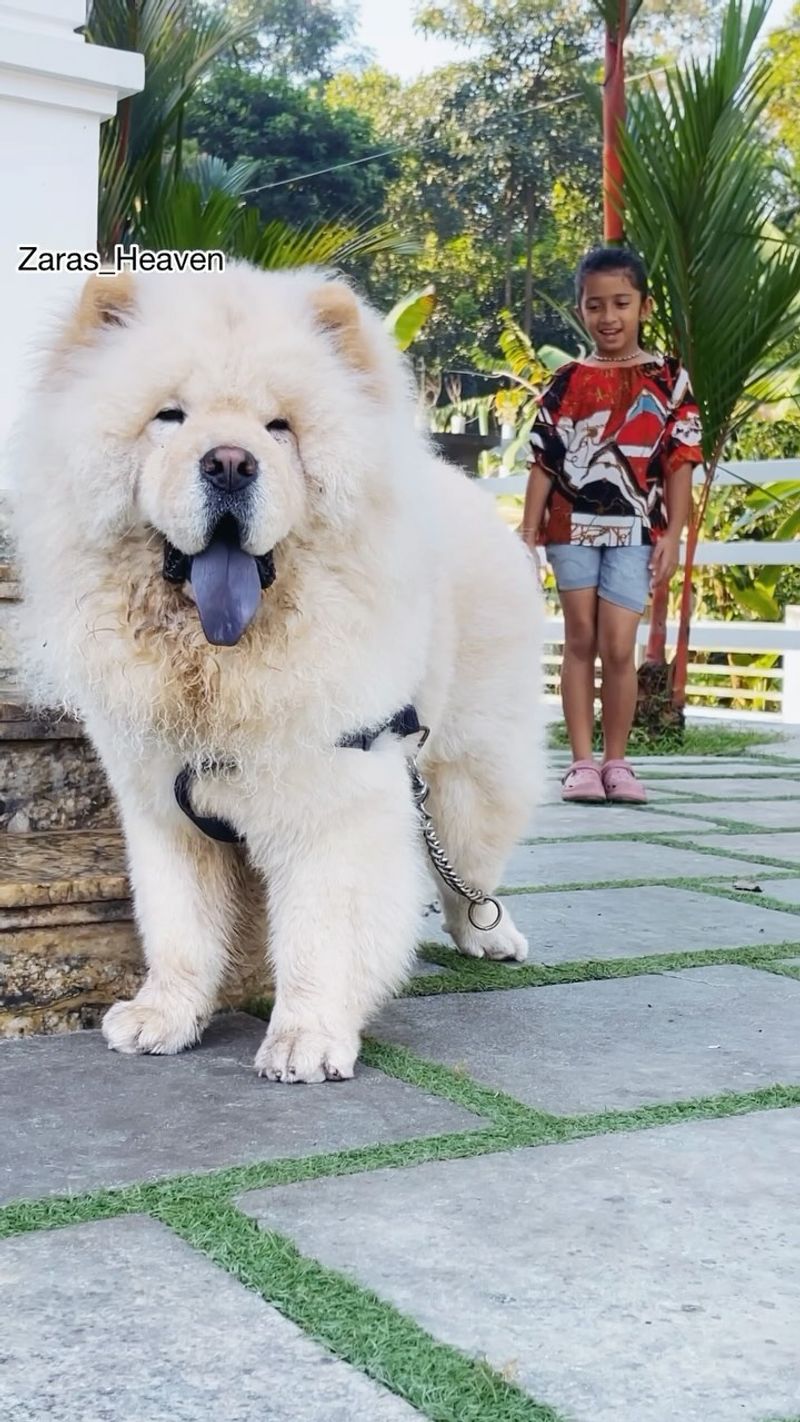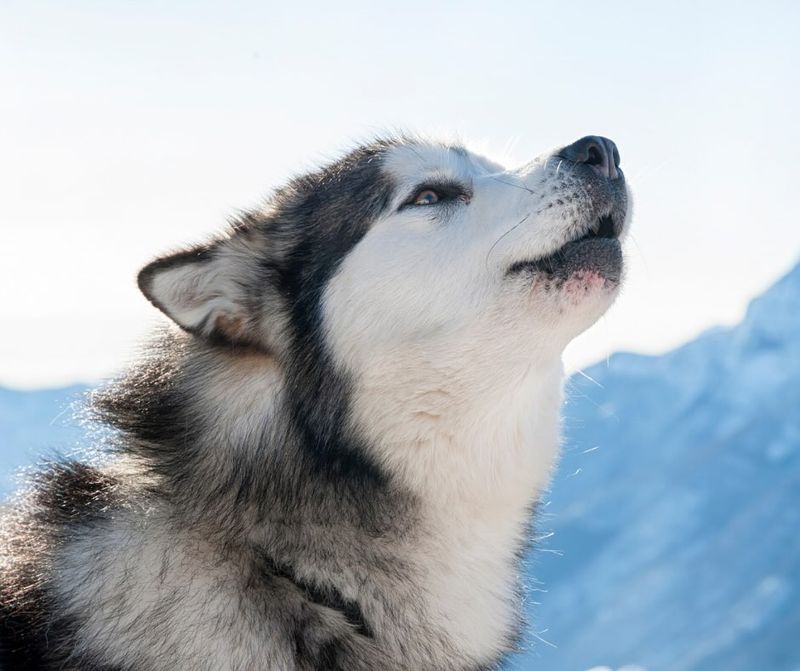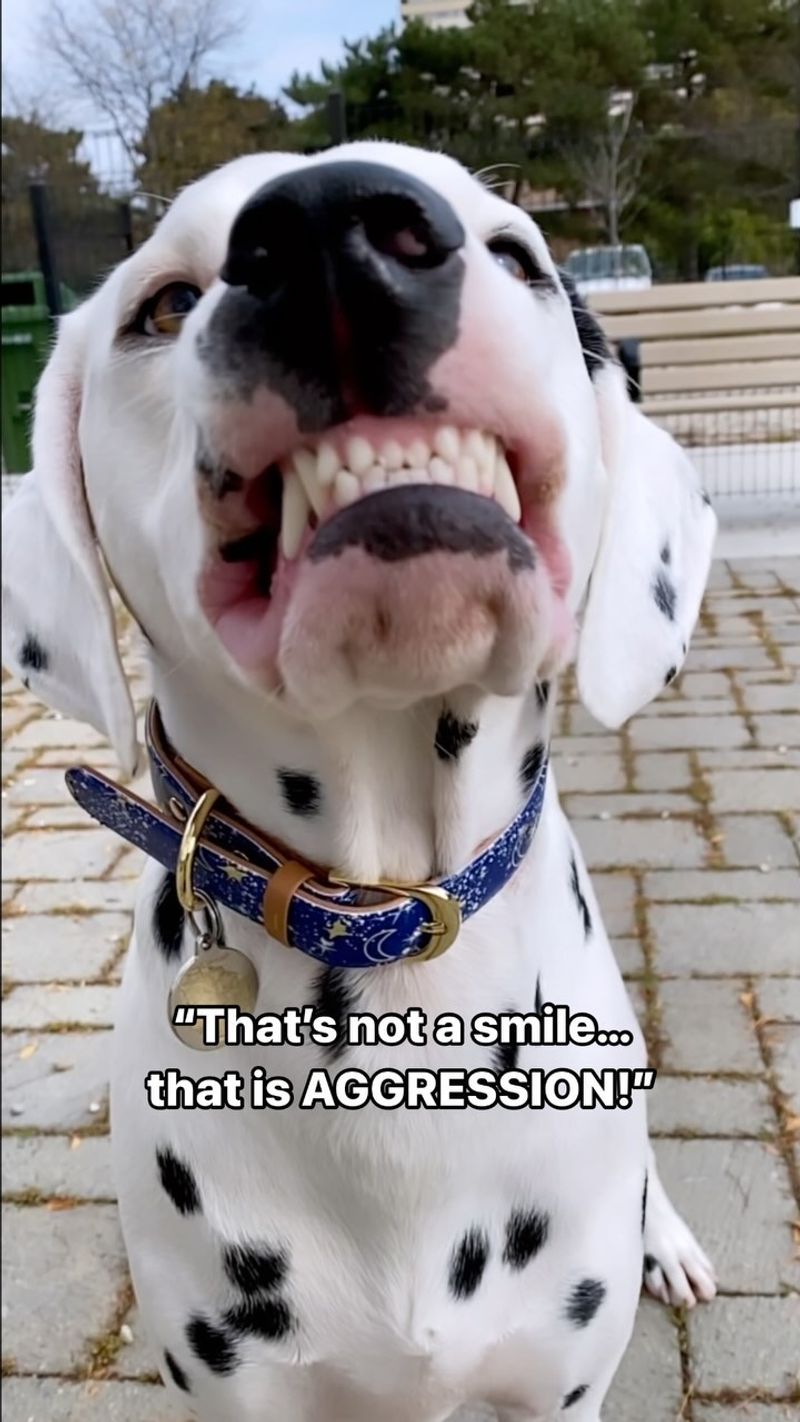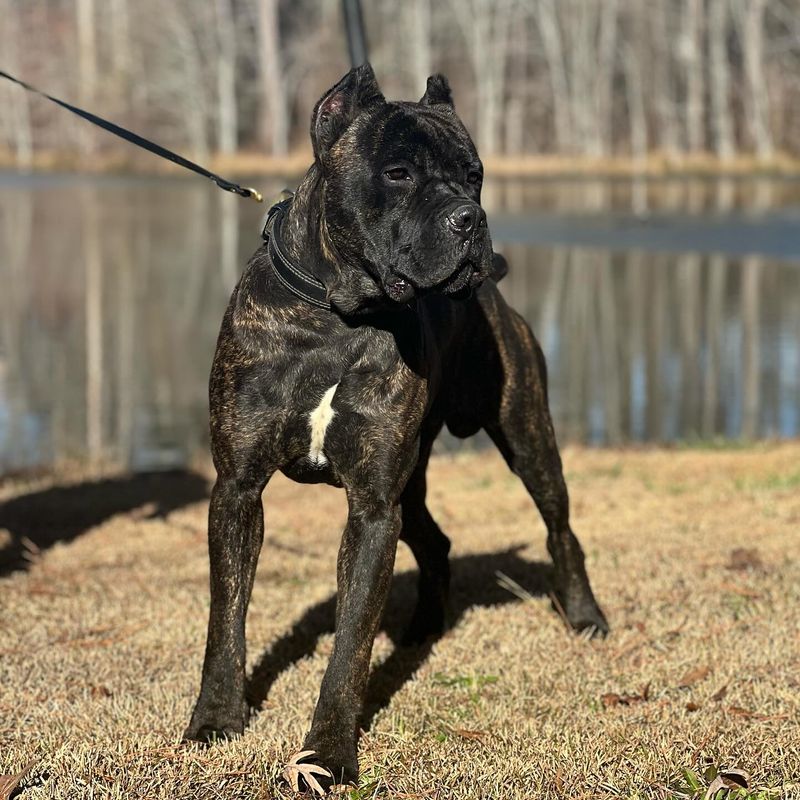Dogs are often considered man’s best friend, but some breeds require more cautious handling than others. According to statistics, certain dog breeds have shown tendencies towards aggression. Understanding these breeds can help in determining how best to approach and interact with them. With proper training and socialization, many of these dogs can be wonderful companions, yet their natural instincts should not be disregarded. Here, we delve into the 12 most aggressive dog breeds that statistics suggest approaching with care.
Rottweiler
The Rottweiler is a breed known for its strength and protective nature. Originally bred to herd livestock and pull carts, they exhibit a natural guarding instinct. Though loyal and loving to their families, Rottweilers can be wary of strangers.
Their powerful build and intense focus make them formidable protectors, but this also requires responsible ownership. Proper training and socialization are critical to manage their strong will.
Did you know? Rottweilers were among the first guide dogs for the blind. Their versatility and intelligence are as impressive as their physical presence.
Pit Bull Terrier
Pit Bull Terriers often make headlines for their powerful bite and muscular build. Despite their reputation, many are loving family pets. However, their history in dog fighting contributes to their aggressive label.
Training and understanding are key to nurturing their positive traits. They can be playful and affectionate when raised in supportive environments.
Fun fact: The Pit Bull Terrier was once America’s favorite dog breed, known as “nanny dogs” for their gentle nature with children. Their past and potential show a complex and misunderstood canine.
German Shepherd
German Shepherds are renowned for their intelligence and loyalty, often seen in police and military roles. Their strong protective instincts can sometimes translate into aggression if not properly managed.
These dogs thrive on structure and purpose, making them excellent working companions. Socialization from a young age is crucial to balance their natural instincts.
Interestingly, German Shepherds were developed in Germany for herding sheep, yet their adaptability has led them to become one of the most versatile breeds worldwide. Their legacy is both remarkable and multifaceted.
Doberman Pinscher
The Doberman Pinscher, with its sleek coat and athletic build, is often associated with loyalty and vigilance. As natural protectors, they have served as guard dogs, but this can also lead to aggression towards perceived threats.
Training is key to harnessing their loyalty positively. They form strong bonds with their families and excel in obedience when guided with care.
A unique trait of the Doberman is its sensitivity to human emotions, which makes them incredibly attuned to their owner’s feelings. This emotional connection is part of their enduring appeal.
Chow Chow
Chow Chows stand out with their lion-like appearance and aloof demeanor. Known for their independence, they can be territorial and wary of strangers, sometimes resulting in aggression.
Socialization from a young age helps channel their instincts appropriately. Despite their standoffish nature, they are loyal to those they trust.
Did you know? The Chow Chow’s blue-black tongue is a unique breed feature. Their ancient origins trace back to China, where they were used as working dogs for hunting and guarding. Their history is as fascinating as their appearance.
Siberian Husky
Siberian Huskies, known for their striking looks and sled-pulling abilities, have a strong prey drive, which can lead to aggressive behaviors. While generally friendly, they need proper outlets for their energy.
These dogs are pack-oriented, requiring a firm leader to guide them. Without structure, their independent nature may become challenging.
Huskies were bred by the Chukchi people in Siberia for endurance and stamina. Their history as sled dogs highlights their intelligence and strength, making them both captivating and demanding companions.
Great Dane
Great Danes, often referred to as “gentle giants,” can display aggression due to their size and strength if not properly trained. While generally friendly, their sheer presence requires responsible handling.
These dogs are known for their affectionate nature with familiar faces but can be intimidating to strangers. Socialization helps mitigate their protective instincts.
Fun fact: Despite their name, Great Danes have origins in Germany, where they were bred for hunting wild boar. Their mix of elegance and strength continues to captivate dog lovers worldwide.
Alaskan Malamute
The Alaskan Malamute, with its wolf-like appearance, is a powerhouse of endurance and strength. Bred for sledding, they possess a strong prey drive that can manifest as aggression.
These dogs require an experienced owner who can provide leadership and ample exercise. Their pack mentality necessitates clear boundaries.
Interestingly, Malamutes were integral to Arctic explorations, valued for their ability to haul heavy loads. Their loyalty and resilience make them both challenging and rewarding pets for those who can meet their needs.
Bullmastiff
Bullmastiffs are known as reliable protectors, with a history as estate guardians. Their calm demeanor can quickly change to aggression if provoked, reflecting their guarding heritage.
These dogs are devoted to their families and can be gentle with proper training. However, their strength and determination require a confident owner.
Did you know? Despite their imposing size, Bullmastiffs were bred to apprehend poachers without harming them. Their blend of power and restraint makes them unique in the dog world, highlighting their noble character.
Boxer
Boxers are known for their energetic and playful nature, yet their strong guarding instincts can lead to aggressive tendencies. This combination makes them both fun-loving and cautious protectors.
Training and socialization from a young age are essential to balance their exuberance. They thrive in active families that can match their energy levels.
Fun fact: Boxers were one of the first breeds employed as police dogs in Germany. Their intelligence and versatility continue to make them popular worldwide, offering both challenges and companionship.
Dalmatian
Dalmatians, famous for their unique spots, have a history as carriage dogs, protecting horses and passengers. This role has imbued them with a protective nature that can sometimes turn aggressive.
They are energetic and require ample exercise to channel their instincts positively. Early training fosters their friendly side.
Interestingly, Dalmatians are born completely white, developing their spots as they age. Their distinctive appearance and spirited nature make them fascinating companions for those who appreciate their lively character.
Cane Corso
The Cane Corso, with its imposing presence and powerful physique, is a natural protector. Bred for guarding and hunting, they can exhibit territorial aggression if not properly trained.
These dogs require firm leadership and consistent training to balance their instincts. When guided correctly, they are loyal and affectionate family members.
Fun fact: The Cane Corso’s lineage dates back to ancient Rome, where they were used as war dogs. Their commanding presence and noble history continue to intrigue dog enthusiasts today.

